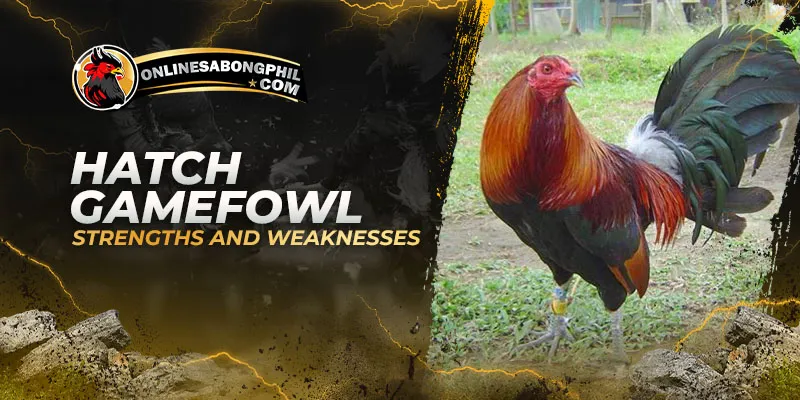The Hatch gamefowl is a historic bloodline with roots in the early 20th century. Renowned for their relentless aggression, raw power, and unwavering gameness, these birds were once highly sought-after in cockfighting. While their fighting origins are a part of their history, responsible breeders now often focus on preserving the bloodline’s unique qualities for exhibition and breeding purposes. The Hatch name remains iconic within gamefowl circles, representing a legacy of tenacity and fighting spirit.
Hatch Bloodline History
Hatch gamefowl history dates back to the early 1900s when breeders carefully blended several foundational bloodlines, including the Irish Kearney strains and the Boston Roundheads. The McLean Hatch offshoot cemented the breed’s reputation, known for their incredible power and aggressive fighting style. Historically, these birds occupied a prominent position in the cockfighting world. Today, the Hatch legacy is a testament to the fascinating and sometimes controversial history of gamefowl breeding.
Hatch Gamefowl Characteristics
Their muscular build, aggressive temperament, and unwavering gameness are characteristics that breeders have carefully cultivated over generations. Here are some of the characters of Hatch Gamefowl:
Physical Traits
- Build: Medium station (height), solid and muscular physique.
- Feathering: This can come in a variety of colors, including reds, whites, greys, blacks, and various combinations.
- Head and Eyes: Head shapes can vary slightly, but they often have intelligent-looking eyes that exude intensity.
Temperament
- Aggression: A hallmark trait – Hatch gamefowl are naturally aggressive and possess a high fighting drive.
- Gameness: Extraordinary gameness, meaning a deep-seated will to fight even when facing severe injury.
- Alertness: These birds are typically very alert and aware of their surroundings.
Behavioral Traits
- Sparring: Hatch gamefowl may be eager to spar and test their fighting abilities.
- Dominance: Can exhibit dominance behaviors, especially males, sometimes vying for hierarchy within a flock.
- Trainability: While their primary instinct is fighting, Hatch gamefowl possess intelligence and can be trained to some degree for handling and exhibition.
Both their physique and temperament make the Hatch gamefowl a unique and historically significant breed. Their distinctive characteristics fascinate breeders and enthusiasts focused on preserving these bloodlines.
Fighting Style of Hatch Gamefowl
Understanding their distinct fighting techniques provides insight into the calculated breeding and strategies behind this bloodline. Here are the strategies of hatch gamefowl:
Aggressive and Attack-Oriented
- Hatch gamefowl relentlessly press forward, constantly seeking to engage and overwhelm their opponent.
Power-Driven
- Their fighting style heavily relies on their muscular build, delivering powerful blows to inflict damage.
Unmatched Gameness
- Perhaps their most defining trait, Hatch gamefowl possess incredible gameness, meaning they will continue fighting with unwavering determination even when facing severe injuries.
Prioritize Power over Technique
- While they can exhibit cunning, Hatch birds often focus on raw force and aggression over complex fighting strategies.
High-Station Fighters
- Some Hatch gamefowl tend to fight in a higher station (more upright), giving them an advantage in reach and the ability to strike from above.
Shufflers
- Certain Hatch lines might display a shuffling style of fighting, utilizing quick footwork to maneuver around their opponent and set up attacks.
The Hatch gamefowl fighting style showcases the breed’s relentless pursuit of victory. Whether through power, aggression, or sheer will to continue, these birds leave a lasting impression on those who witness their combat prowess and highlight a unique element within the world of gamefowl breeds.
Hatch Gamefowl Strengths and Weaknesses
The Hatch gamefowl bloodline stands as a testament to power and unwavering determination. These birds possess remarkable strengths that make them prized in cockfighting circles. Here are the strengths and weaknesses of hatch gamefowls:
Strengths
- Power: Hatch are renowned for their ability to deliver powerful blows that can quickly debilitate opponents.
- Gameness: Their extraordinary gameness makes them formidable fighters, able to continue the fight even when facing severe injuries.
- Aggression: This relentlessness and high fighting drive can quickly overwhelm less aggressive opponents.
- Adaptability: Some breeders consider Hatch gamefowl to be intelligent and adaptable fighters.
Weaknesses
- Susceptibility to Cutting: Their focus on power and forward aggression can sometimes leave them vulnerable to skilled cutters (birds specializing in slashing attacks).
- Prone to Overexertion: Their gameness can paradoxically work against them, sometimes leading them to fight beyond their physical limit and collapse from exhaustion.
- Tendency to Focus on the Head: Some Hatch birds might overly target the opponent’s head, leaving themselves open to body shots.
- Ethical Considerations: The historical use of Hatch gamefowl in cockfighting raises significant moral concerns about animal welfare.
Their strengths speak to calculated breeding and a powerful fighting spirit. Yet, their weaknesses and the ethical concerns surrounding their origins must always be acknowledged for a balanced understanding of this unique breed.
Hatch Gamefowl Lifespan
The lifespan of Hatch gamefowl is similar to that of other chicken breeds. On average, they live for 5-8 years. With exceptional care, a healthy diet, and a safe environment, some Hatch birds can live longer, reaching up to 10-15 years in rare cases. However, it’s important to remember that their historical involvement in cockfighting meant many individuals didn’t reach their full lifespan potential due to the injuries sustained during fights.
Conclusion
The Hatch gamefowl breed is celebrated for its robust build and spirited nature. Historically linked to cockfighting, today’s breeders focus on preserving its unique characteristics and rich heritage. This shift from combat to conservation highlights the breed’s cultural significance and promotes ethical breeding practices.
Visit us at Onlinesabongphil.com for more guides and tips!



